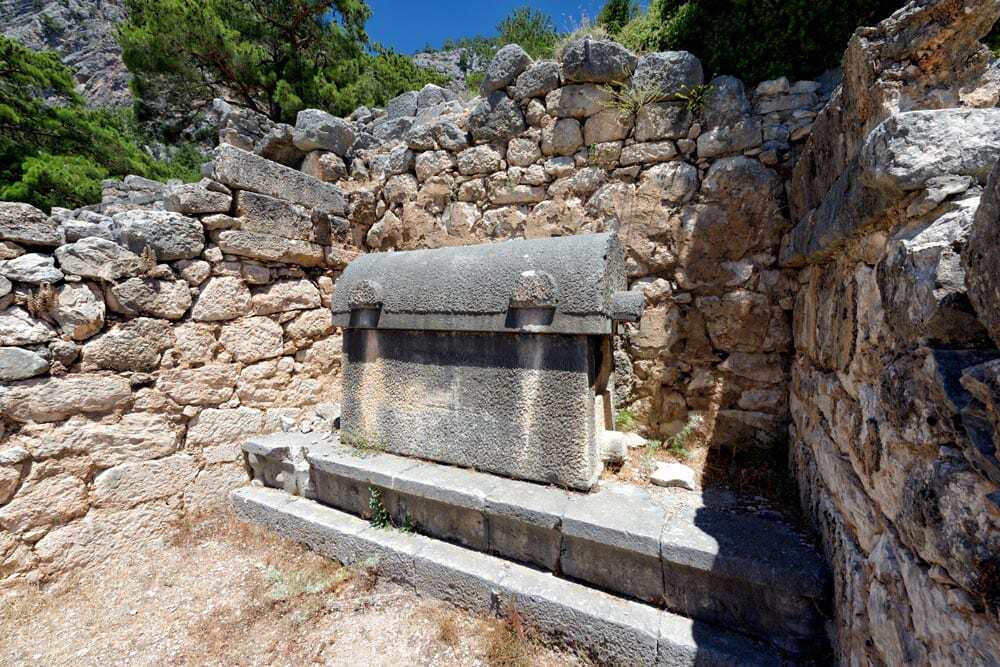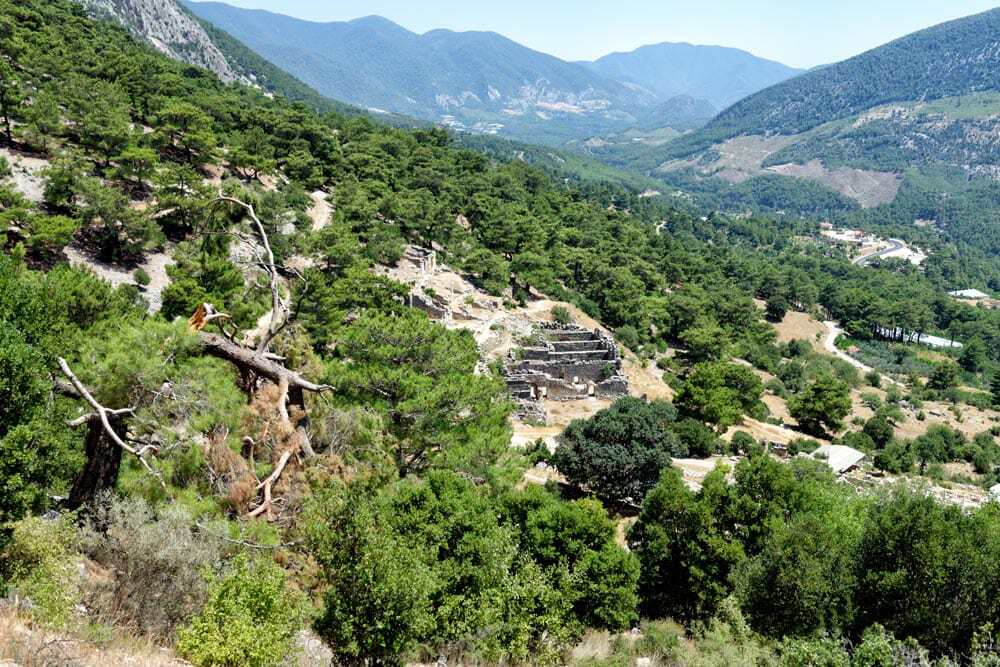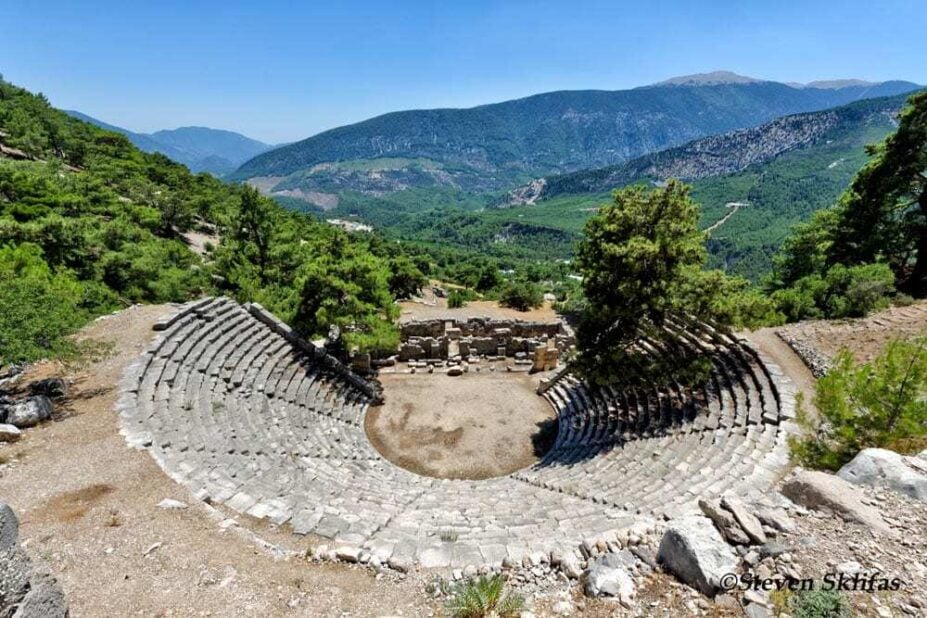Arycanda is known to be one of the oldest Lycian sites – its name ends with -anda, indicitive of its Anatolian origin dating back as far as the second millennium BC. Some of the oldest coins of Lycia (5th c. BC were also found here during a recent digging; the site is under continuous excavation. Arycanda is a unique Lycian city, built upon five large terraces ascending a mountain slope, and was known for having the most pleasure and entertainment-loving (and debt-ridden) citizens.
The city was well-known for its grand and ornate buildings, however according to ancient sources the citizens of Arycanda were somewhat lazy and in the habit of living lavishly beyond their means. It is said that they fell into debt; and it is believed they repaid their extravagance through new special taxes.
In antiquity Arycanda was a member (with voting rights) of the Lycian League and even minted its own coins.
Arycanda was a small obscure settlement when it was invaded by the Persians in the 5th century BC. Like other Lycian cities, Arycanda heroically resisted the invasive powers, however they eventually succumbed to the might of the Persian Empire. The city survived through Byzantine times, until the 9th century when the settlement moved to a new site south of the modern road and restoration work in recent years have succeeded in unearthing a beautiful city, well-organized with the look of an architectural model.

Some features of this magnificent city include:
- Largest bath complex in Lycia, on the lowest terrace, still virtually intact in its sequence of arches, next to the gymnasium.
- Agora, some of the shops in its eastern part can still be seen. It is wide and flat, located to the south of the odeon and was enclosed on three sides by a portico.
- Amphitheatre, in excellent condition, built during the 2nd century AD. 20 rows of seats, divided into 7 sections. At the edge of every row are holes that were used to support protective awnings.
- Odeon – 2nd century AD. The main entrance is to the south, though a triple portal. This was once a very ornate building, the interior was lined with orthostats and the walls, orchestra and seats were once covered with coloured marble. A frieze over the portal bears a portrait of the Emperor Hadrian flanked by cartouches bearing masks and heads of deities in relief.
- Stadium, from the Hellenistic period, above the theatre, in the form of a running track. It is smaller than a usual stadium, measuring 106 m. long and 17 m. wide. A few step-like seats on its north side are all that remain of the stadium.
- Necropolises, there are two of them, and the one on the entrance to the site is very interesting with its series of richly decorated funerary monuments. The eastern necropolis has barrel-vaulted monumental tombs, temple-tombs and sarcophagi and the western necropolis has rock-cut tombs and barrel-valuted tombs.
- Bouleuterion, where the council met, located on the northwest slope of the city at the end of a 137 metre long stoa. The building is set into a mountain slope, with rows of seats cut into living rock.

It is widely acknowledged that the ancient city of Arycanda and the journey to it from Kaoffers some of the most breathtaking scenery to be found in Turkey. Heading into the mountainous hinterland and hamlets you can see traditional village life, the locals busy in the fields and an abundance of crops and flora. Arranged on terraces cut into steep south-facing hillside overlooking the pine forested valley between the Akdag and Arykanda’s remains are both extensive and impressive.

Arif, 07740 Finike/Antalya, Turkey

